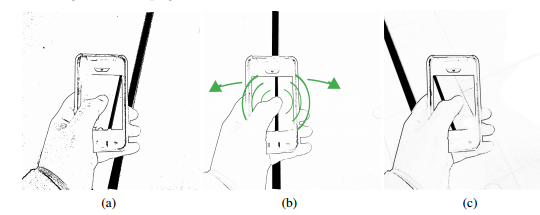A smartphone app inspired by Greek mythology has the potential to help the blind navigate indoors where GPS is unavailable.
January 8, 2014

It’s easy to imagine that being blind or visually impaired more or less excludes people from using smartphones or tablets. But nothing could be further from the truth. App stores have a dizzying variety of products that help the visually impaired access all kinds of information much more easily than would otherwise be possible.
These apps offer audio books, match clothes by colour and even offer games played by hearing and touch alone. But the apps designed to give directions all suffer from the same drawbacks—audio directions are helpful but also screen out other audio such as conversations or the sound of traffic nearby. What’s more, GPS does not work indoors so these kinds of systems are of little use in homes and other buildings
Now Pierluigi Gallo and buddies at the University of Palermo in Italy have come up with an alternative which offers the blind navigational help without any form of audio distraction or the need for GPS.
The approach is surprisingly simple and inspired by the famous Greek myth of Ariadne and Theseus. In the story, Theseus volunteers to kill the Minotaur which lives in a labyrinth on the island of Crete. To help him, Ariadne gives him a sword to kill the beast and a ball of thread to help him find his way out when the deed is done.
Gallo and co take a similar approach with their prototype smartphone app called Arianna, the Italian name for Ariadne. (It’s also short for “pAth Recognition for Indoor Assisted NavigatioN with Augmented perception.) Their idea is to map out a route through a building by sticking coloured tape on the ground.
The user then switches on the smartphone camera and points it towards the ground, while placing a finger on the screen. He or she then waves the camera back and forth, scanning the ground for the line.
In the meantime, the app analyses the frames produced by the camera, picking out the line as it moves across the screen. When the line passes under the user’s finger on the screen, the app causes the smartphone to vibrate, providing a tactile indication of where the line falls.
Scanning the smartphone back and forth allows the user to follow the line in the same way as he or she might use a cane (see diagram above). At the same time, QR codes placed on the ground can give the user other information such as the location of places such as toilets, water coolers, shops and so on.
Gallo and co say they tested their virtual cane in December at workshop in Boston organised by the Andrea Bocelli Foundation and say it works well.
And they plan significant upgrades in future. One idea is to use infrared lines that are not visible but can nevertheless be picked up by smartphone cameras which are sensitive to infrared. This infrared sensitivity is currently an under-used feature of most smartphones, they point out. And that raises the possibility of games and challenges that are equally accessible to the blind and sighted.
All in all, this software could be a significant help to the blind and visually impaired. Hi-tech aids for this disability tend to be expensive because they have to be specially designed and manufactured for a relatively small group of people. But with smartphones widely available at affordable prices, much of the technology necessary for Ariana is available off-the-shelf.
Gallo and co don’t say when their new idea will be available as a commercial app or how much it will cost but it has the potential to be significantly cheaper than a bespoke device.
So: useful, simple and potentially cheap. Not a bad combination for an app.
Ref: arxiv.org/abs/1312.3724 : ARIANNA: pAth Recognition for Indoor Assisted NavigatioN with Augmented perception
http://www.technologyreview.com/view/523401/app-turns-smartphone-into-virtual-cane-for-the-blind/

No comments:
Post a Comment